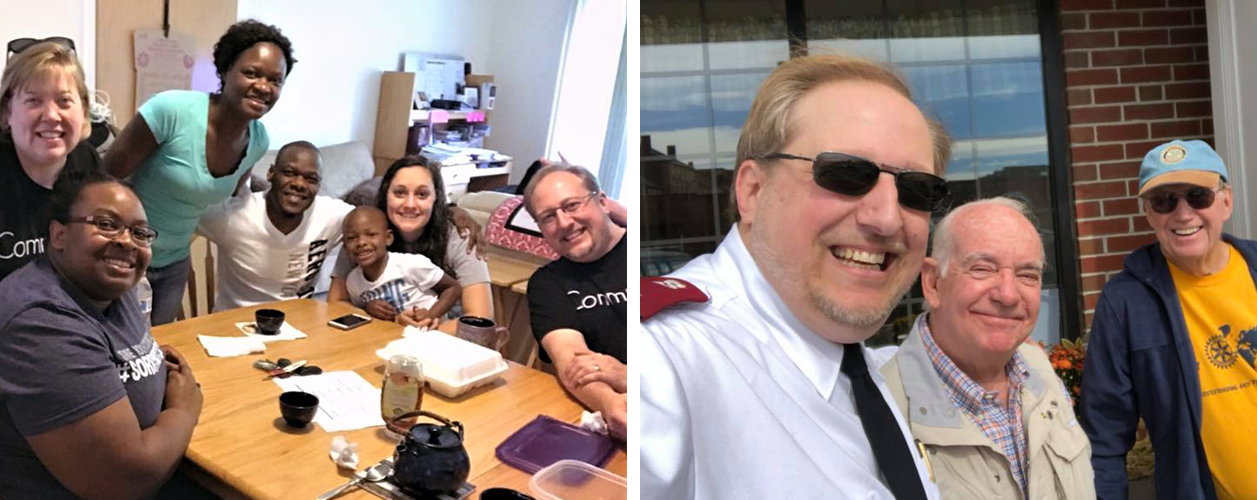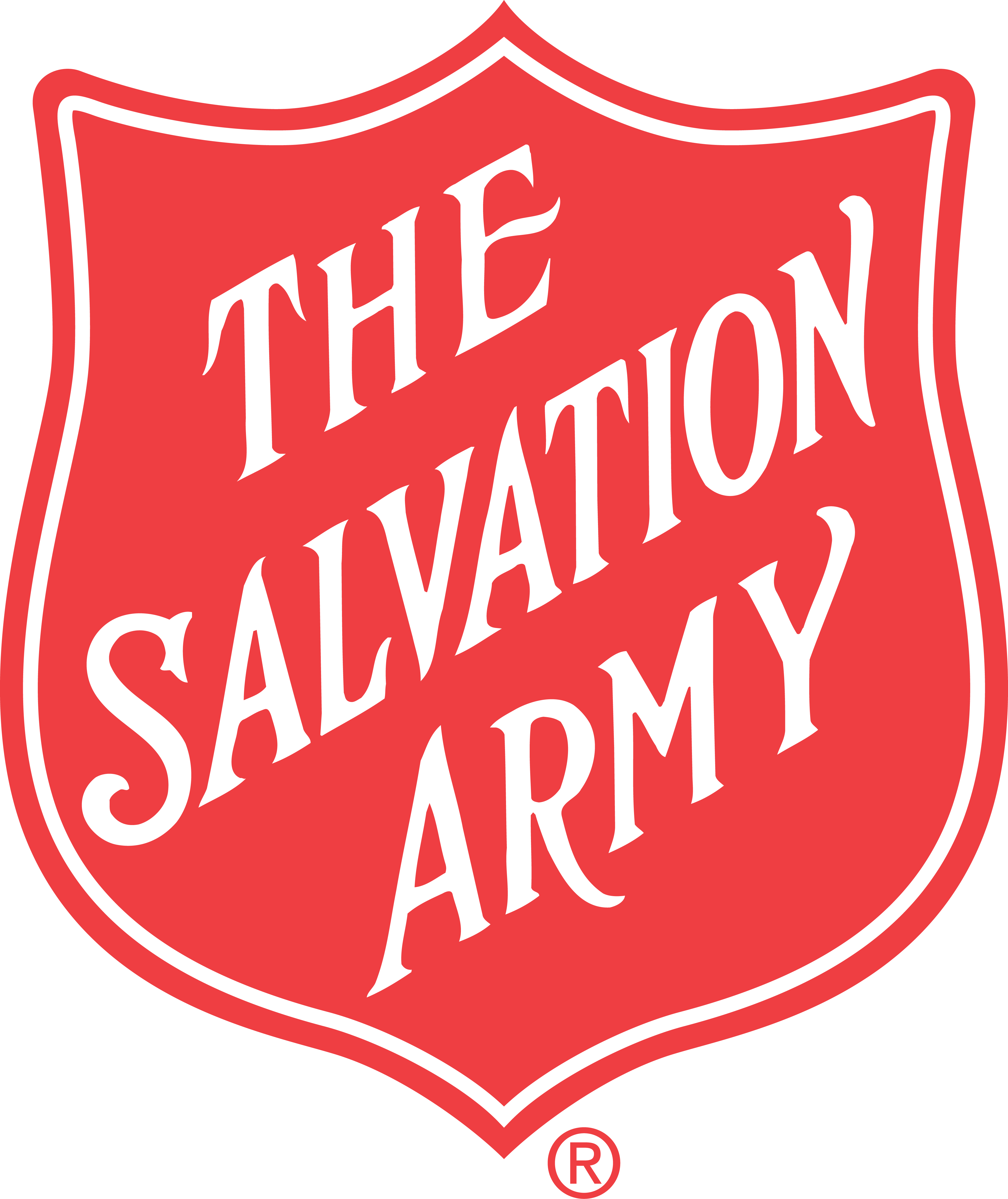Being at the table
by Guest

I had just entered a dimly lit dining room of a restaurant in which the local Rotary Club met weekly. Then I overheard someone across the room quietly say, “Wow, it’s been a long time since I’ve seen that uniform.” The remark shocked me to the core.
My wife and I had just arrived in town at our first appointment as freshly commissioned lieutenants of The Salvation Army. In heeding the advice of other officers and my father-in-law, I had immediately sought out that Rotary Club.
We had entered training in our mid 40’s after gaining 20 years of practical experience as workers in many Salvation Army corps (churches) throughout the USA Eastern Territory. We also worked with many corps officers.
During those years, my wife was a special needs teacher and I worked in the technology field. We remember encountering different views on how to lead, but one thing was certain, people in the communities in which we served were always watching. For that reason, we have always felt the importance of being in community is often undersold.
Community: a big part of The Salvation Army
We serve in a community. We serve a community. We worship in community and with community. Therefore, The Salvation Army and the community have a symbiotic relationship. Like a pilot fish and a shark, we live with each other and each plays an important role in the other’s life.
Captain Kama Lyle, divisional youth and candidates’ secretary for the Northern New England Division, says, “The Salvation Army and the community are a partnership. Both parties work as a team to meet needs, restore lives, and continuously collaborate in ways that bring positive change and hope as well as promote unity and safety in community.”
We often think that The Salvation Army is serving the community, but we tend to forget that without the community, there would be no need for The Salvation Army. Colonel Janet Munn, co-director of the International Social Justice Commission, describes it this way, “The Salvation Army is present in the community as a spiritual, practical, social, and emotional resource. The resources of the community belong to or are needed by The Salvation Army. We need the financial support of the community, and the political support of leaders and others in order to cooperate in accomplishing shared goals.”
When we pull ourselves out of the community
Captain Gary Thornton, commanding officer of the Berlin, N.H., Corps, says, “While a community can exist without any Salvation Army presence, The Salvation Army can also be the last line of defense for many, making those communities we serve a better place.”
When we remove ourselves from the community, we tend to see our support disappear and we start to lose our purpose in the community. Although we have often had relationships with our communities, if we were to disappear, the communities would find other ways to fill their needs.
Craig Evans, director of development for the Northern New England Division, puts it this way, “If the Army were to stop interacting with the community, regardless of the reason, we would quickly lose relationships that have been built over decades and our brand would suffer. Community support, whether it’s in the form of donations, advocacy, in-kind product or traditional Army programs, would all dwindle.”
As we pull ourselves out of the community, we are no longer doing what we are all called to do and what we are charged to do in Hebrews 13:16, “And do not forget to do good and to share with others, for with such sacrifices God is pleased.”
What does it mean to be in the community?
In quoting theologian John Wesley, Colonel Munn said, “’The world is my parish,’ revealing that he did not have a parochial view of Christian/pastoral/church leadership. His vision and reach were aimed much wider than just nurturing a local congregation.”
Munn continued, “Likewise, The Salvation Army belongs to the wider community, available to serve the needs of the community, as well as partnering with others in the community—other community organizations and other individuals and churches in the community. Hence, the idea of advisory boards would draw on the strengths of the community to advance the Salvation Army’s mission for Christ in the community.”
Colonel Richard Munn, co-director of the International Social Justice Commission explains further, “A corps officer is appointed to a zip code, not a congregation.” He cited how officers are commissioned to a specific city and state, rather than to a corps. For example, when the territorial commander announces their first appointments, they hear, “Bath, Maine!” rather than “Bath Corps!”
Being in the community requires us to actively get out from behind our desks and get out of our seats in the chapel and attend various events in uniform or some sort of identity wear. We must let people know that The Salvation Army is in the community and that it cares about the community.
This is not the sole responsibility of the commanding officer, but the responsibility of us all who attend The Salvation Army church or programs. It is so much easier to sit on the sidelines and then take credit when things go right. However, God wants us in the game rather than on the sidelines as spectators. Catherine Booth put it this way, “You are not sent here in the world for yourself. You have been sent for others.”
Evans says, “Too often we behave as separate entities. Yes, we serve the community, but we are not always fully engaged with the key stakeholders who determine the economic, social, and cultural character of the town or city in which we serve. A frequently used phrase is to ‘be at the table.’”
The Salvation Army needs to be at the table to make a difference in the community and in order for the community to know who to support.
This is a call to arms. Let us put those uniforms on with pride and show that we are servants of a different spirit. We must work together in this mission. Ask your commanding officer how you can help.
Let us show our communities that we are here to serve them and to serve the Lord.
by Lieutenant Neil Childs

